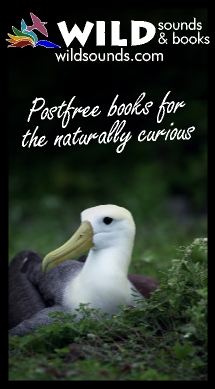The Warbler Guide
Tom Stephenson & Scott Whittle
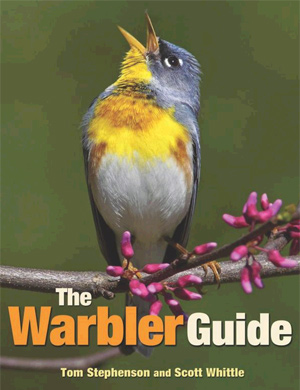
The most innovative field guides still seem to come out of North America. Whilst European birders have often liked to regard themselves as more sophisticated when it comes to pushing back identification frontiers, it is still the Americans, from Peterson onwards, who have led the way in developing new formats and pushing the boundaries of this now-familiar genre.
The new generation of Crossley guides, for example, explores how new technology (digital imagery) can enhance our learning. The approach of this guide is built around how another form of technology (recordings and sonograms) can lead to new advances in bird recognition. The group chosen for this approach is that most famous of all North American bird groups - the warblers. Rightly prized by American birders and drooled over by Europeans, they are perhaps the continent’s most desirable and most desired birds.
A number of introductory sections explain warbler topography, what to notice on a warbler and ageing (here spelt ‘aging’) and sexing. Then comes the really innovative bit - a detailed introduction to sonograms and how to listen to and understand songs and calls. This section is detailed and comprehensive, classifying vocalisations into their component elements, phrases and sections and categorising their qualities as clear, complex, buzzy, trilling etc. This goes far beyond the treatment in any other field guide. Some have used sonograms before but have done very little to explain them. The approach here is therefore genuinely new.
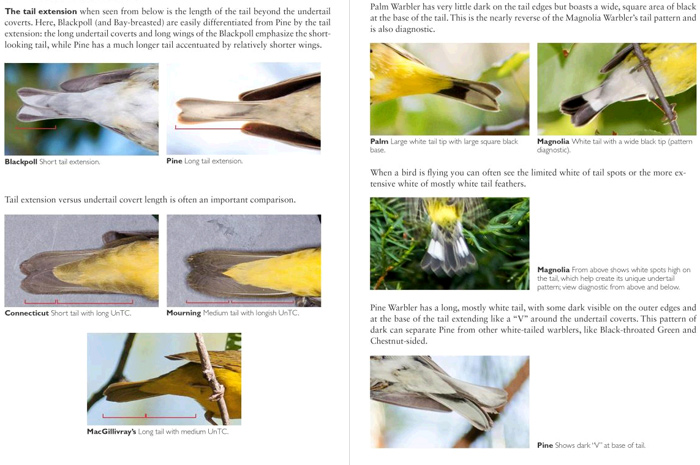
Then come some charts of images (a ‘visual finder guide’) and sonograms (a ‘song finder chart’) before we reach the meat of the book - the individual species accounts. This section employs a highly graphics-based and easy to use visual style. Quick recognition icons are used to signify each species’ size, basic colour pattern, undertail pattern, range, foraging niche and feeding behaviour whilst the range maps and migration calendars are admirably clear and attractive.
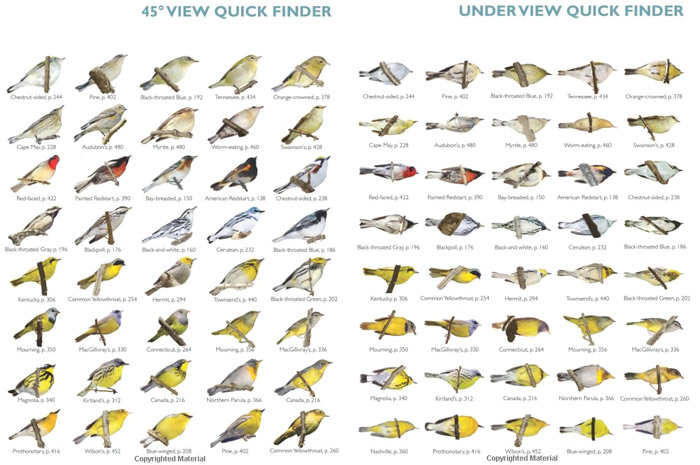
Each species is dealt with in depth, typically in around a dozen pages, and almost exclusively through photographs. Apart from the photograph captions, there is almost no text and what text there is is focused purely on identification. As an example, the first species covered - American Redstart - has 48 images. All are of good quality and useful for identification but most are reproduced very small and might test the eyesight of some. Each sex is given multiple pages and images, showing views from all possible angles and illustrating key aspects of jizz and behaviour. Highlighted for each species are some ‘distinctive views’ and some images of comparison species, whilst ageing and sexing are also addressed in some detail. The only error I found related to the rare warblers at the end of the book where the comparison species are all titled ‘distinctive views’ - clearly a layout and proof-reading slip-up.
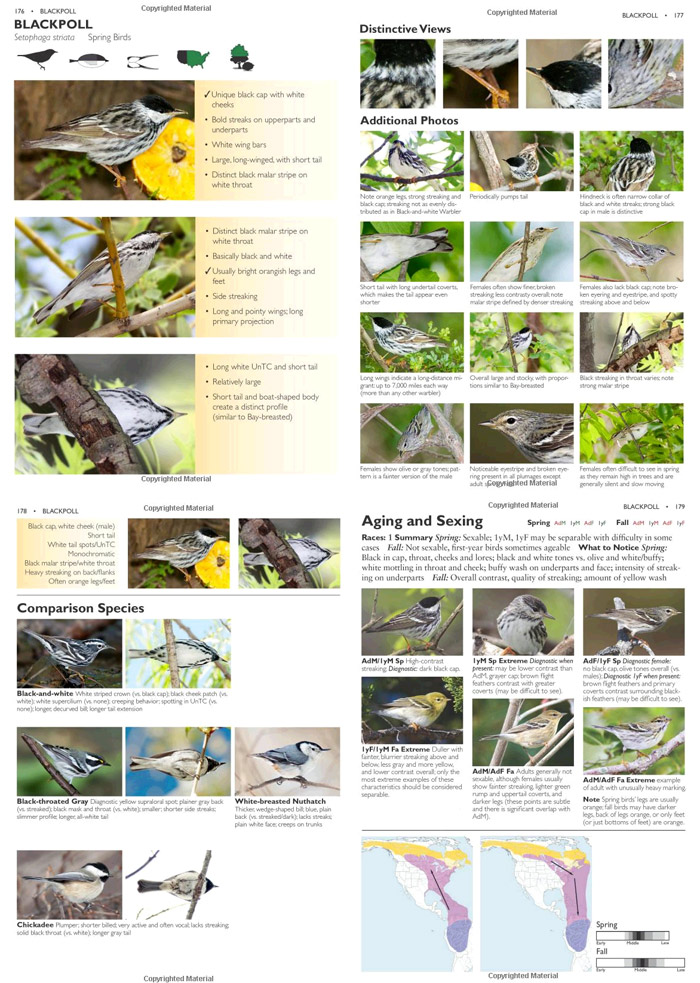
Published: July 2013 - Princeton University Press
560 pages
ISBN: 978-0691154824
Paperback
RRP: £19.95
SPECIAL OFFER Pay just £15.95 when you quote your discount code
For details on how to get your exclusive discount code click here >>>
Please note: When ordering via WildSounds, the value of the voucher will be deducted from your order when the order is processed. The total displayed on your shopping basket excludes the value of the promo but this will be applied before final payment is taken.
Offer only valid until Aug 31st
As might be expected, each species also merits at least one, sometimes two, double-page spreads of sonograms showing both its own vocalisations and those of confusion species. Some species accounts are concluded by a full-page portrait though some of these (for example Mourning Warbler) are of dubious quality and that of Blackburnian Warbler has half its bill cut off.
The book closes with some useful final sections on warbler hybrids, a quiz and review, warblers in flight, taxonomy, measurements, silhouettes and habitat and behaviour.
This is a comprehensive treatment of North America’s favourite bird group. Though a softback, it is still a large and heavy book of some 560 pages and is therefore too big and heavy to take out in the field. It should, however, sit happily in the dashboard of the average SUV or pickup.
Andy Stoddart
August 2013



